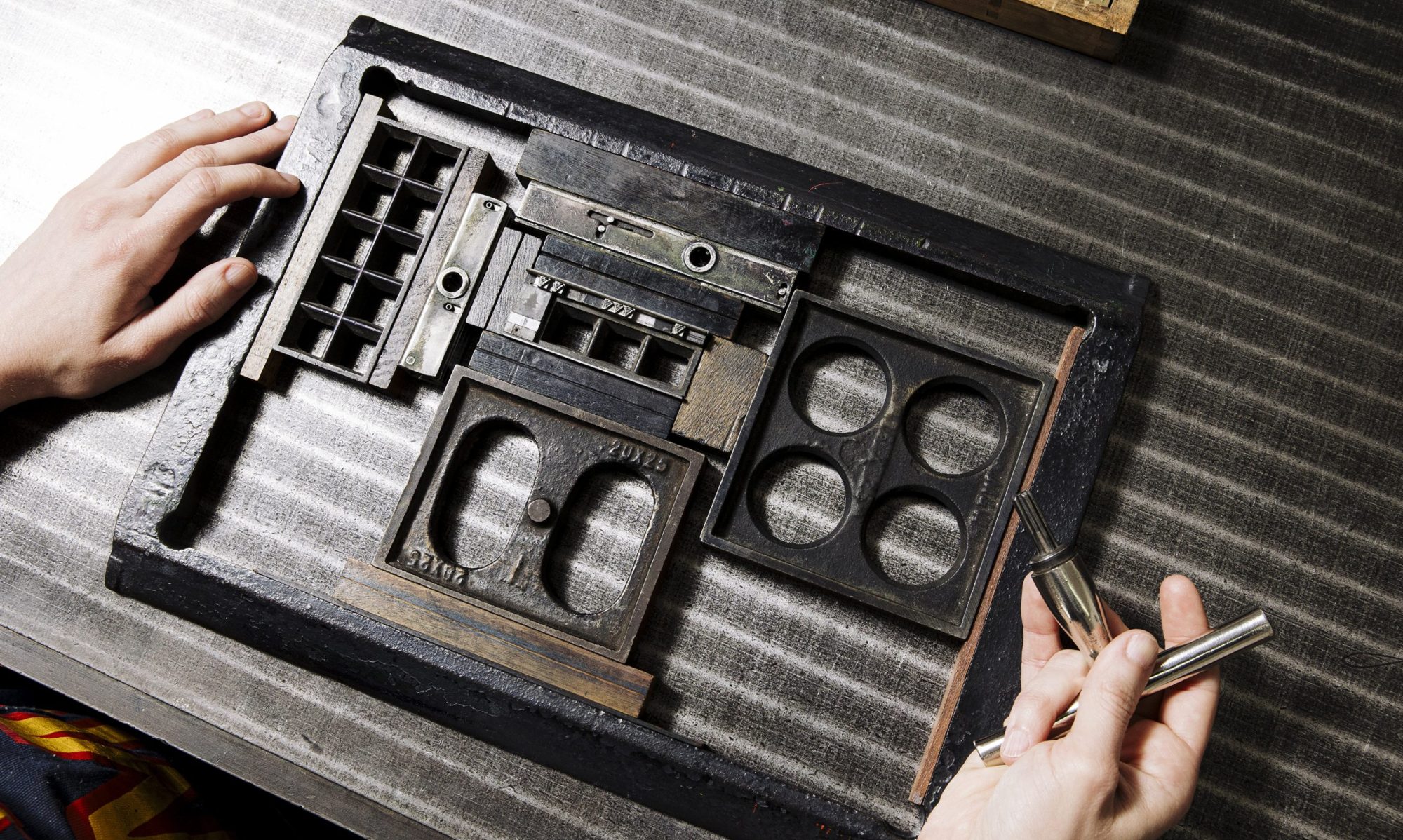Selected parts of the process (described in more detail here) at 4x speed! And the printed tree:
Building a form
Made a tree out of decorative pieces this week! It’s only slightly faster than actually planting a tree.
The materials were a collection of floral pieces that were varied enough to be interesting, numerous enough to cover the area of a 4.25×5 card, and mathematically compatible enough to keep me sane.
I mostly made it up as I worked, laying out rough chunks of the picture…
…and filling in empty space as it came.
All the empty space within the printed area has to be filled with short, non-printing spacing material so that when pressure is applied to its side walls, the whole thing can be lifted and nothing will fall out the unsupported back side.
The back side of the form shows most clearly where all the pieces are arranged, and how many it takes to fill up the grid.
I recorded video of the whole building process—absolutely unfit for human consumption in its raw, hours-long form—which I’ll be editing and putting up later this week. Keep an eye out for it if you’re interested!
Double scoring on the Golding
The Golding press that sits in our front window has no rollers (and no working brake), and we use it exclusively for scoring, embossing, and debossing: un-inked operations.
Here, we used it to score the folds on a heavy booklet cover. It had a narrow spine defined by two scores, where the paper is indented for ease of crisp and consistent folding.
This means compressing the paper between a blunt steel edge in the bed and a grooved receiving strip adhered to the surface under the paper. The scores were so close together we couldn’t fit two strips of the receiving matrix next to each other. With some very careful math and trimming, we could use one setup for both scoring lines, turning the sheet 180° during the feed to make both sides of the spine fold.
It’s a slow feed, mostly for the fact that when the sheet is fed the second time the bump of the first fold tends to catch on the receiving matrix. But on a careful, short run it’s worth the effort to plan ahead, save time, and avoid making a second setup for another score.
We don’t keep the small, unmotorized presses just because they’re cute! For delicate projects like this, the fine control of speed by treadle operation is an advantage.








You must be logged in to post a comment.